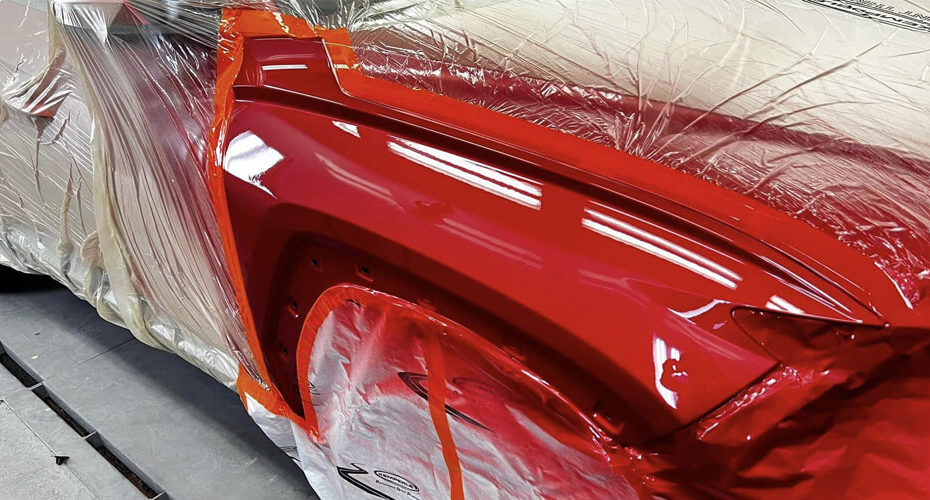The time between clear coats depends on the paint manufacturer’s recommendations and the environmental conditions. The duration can vary from a few minutes to a few hours, allowing for proper drying and curing of each coat before applying the next one.
In automotive refinishing, applying clear coats is a crucial step to achieve a glossy and protective finish. The waiting time between clear coats is determined by several factors, such as the type of clear coat, the ambient temperature and humidity, and the specific instructions provided by the paint manufacturer.
Generally, it is essential to allow enough time for the previous coat to dry and cure properly before applying the next one. This ensures proper adhesion and minimizes the risk of defects or damage to the finish. Following the manufacturer’s recommendations and considering the environmental conditions will result in a durable and flawless clear coat finish.
Understanding The Clear Coat Process
Clear coats play a crucial role in achieving a flawless finish for any paint job. They not only enhance the durability of the surface but also add a brilliant shine to it. The application process of clear coats involves several steps.
First, the surface is properly prepared by sanding and cleaning it. Then, a primer coat is applied to ensure smooth adhesion. Next, multiple layers of clear coat are carefully sprayed onto the surface, allowing sufficient drying time between each layer.
This allows for better bonding and avoids any potential issues like bubbling or running of the clear coat. The exact time between clear coats can vary depending on factors like temperature and humidity. Ensuring the right time intervals between coats is essential to achieve a flawless and long-lasting result.
Overall, understanding the clear coat process is key to achieving optimal results in any paint job.
Factors Affecting Drying Time Between Clear Coats
Factors such as temperature and humidity play a crucial role in the drying time between clear coats. Additionally, the type and brand of paint used can also influence the drying process. Different clear coat formulations have varying effects on the time it takes for them to dry.
It is important to understand these formulations to ensure the desired finish and avoid any potential issues. By considering these factors, you can determine how long to wait between applying clear coats for optimal results. Overall, the drying time between clear coats is affected by a combination of environmental conditions and the specific paint being used.
So, it is essential to take them into account to achieve a successful clear coat application.
Determining The Ideal Time Interval Between Clear Coats
The ideal time interval between clear coats can vary depending on several factors. One important consideration is to follow the guidelines provided by the manufacturer. These guidelines are designed to ensure optimal results and should not be disregarded. Additionally, project specifications can also play a role in determining the ideal time interval.
Factors such as the type of surface being coated, the weather conditions, and the drying time of the previous coats should all be taken into account. Following these tips can help achieve the best outcome for your project. It is crucial to understand that the specific time interval may differ for each project, so it is essential to consult the manufacturer’s guidelines and consider the unique circumstances of your own situation.
By doing so, you can ensure a proper curing process and a long-lasting finish.

Credit: www.cnn.com
Strategies For Minimizing Waiting Time Between Clear Coats
Strategies for minimizing waiting time between clear coats are essential for efficient painting jobs. By controlling airflow and ventilation, you can accelerate the drying time safely. Properly positioning fans and opening windows can create a steady flow of air, expediting the drying process.
Additionally, using drying aids such as air movers or dehumidifiers can help remove excess moisture from the environment. Another technique is utilizing heat sources effectively, such as infrared lamps or heat guns, to speed up the evaporation of solvents. However, caution must be exercised to prevent damage to the paint or material.
By implementing these techniques, you can reduce the waiting time between clear coats and achieve faster and better results for your painting projects.
Dealing With Delays And Unexpected Conditions
Are you experiencing delays in between clear coats during your painting project? Don’t worry, we’ve got you covered. Troubleshooting common issues that extend drying time is essential. If you find yourself waiting too long between clear coats, there are a few steps you can take.
Firstly, assess any unforeseen factors like changes in weather or unexpected equipment malfunctions. Make adjustments accordingly to minimize the impact on drying time. Secondly, ensure that your work area is properly ventilated to promote faster drying. Consider using fans or open windows for better air circulation.
Additionally, you can consult with professionals or refer to user manuals for specific product suggestions to speed up the drying process. Remember, the key is to be patient and address any unexpected conditions promptly. By following these troubleshooting steps, you will be able to minimize delays and achieve a flawless finish in your painting project.
Achieving A Flawless Clear Coat Finish
Achieving a flawless clear coat finish requires following best practices and techniques. To avoid common mistakes and imperfections, it’s important to carefully apply the clear coat. Begin by ensuring that the surface is clean, smooth, and properly prepared. Use high-quality materials and apply thin layers of clear coat, allowing sufficient drying time between each coat.
This prevents running or pooling of the clear coat, resulting in a smoother finish. Additionally, make sure to apply the clear coat in a dust-free environment to avoid any particles sticking to the surface. After the final coat is applied, give it time to cure properly.
Once cured, gently sand the surface with a fine grit sandpaper to remove any imperfections. Finally, apply a polish or wax for the ultimate showroom-quality result. By following these steps, you can achieve a flawless clear coat finish.
Maintaining And Protecting Clear Coat Finishes
Maintaining and protecting clear coat finishes is crucial for preserving their integrity and shine. To keep them looking their best, there are a few key tips to follow. Firstly, using recommended products and techniques for cleaning and protection is essential.
This includes opting for gentle, non-abrasive cleaners and soft microfiber cloths. Secondly, addressing minor scratches or damages promptly is necessary to prevent further deterioration. Depending on the severity, there are various DIY solutions available, such as using touch-up pens or clear coat repair kits.
It is important to carefully follow the instructions provided for each product. By adhering to these guidelines, you can ensure that your clear coat finishes remain in top condition, enhancing the overall appearance and longevity of your vehicle or other surfaces.
Frequently Asked Questions For How Long Between Clear Coats
How Long Does 2 Part Clear Coat Take To Dry?
The drying time for a 2 part clear coat varies, but it typically takes around 24 to 48 hours.
What Happens If You Apply Second Coat Of Paint Too Soon?
Applying a second coat of paint too soon can result in uneven drying and poor adhesion.
Do You Need To Sand Between Clear Coats?
Yes, sanding between clear coats is necessary for a smooth and professional finish.
How Long Should You Wait Between Clear Coats When Painting A Car?
It is recommended to wait at least 24 hours between clear coats when painting a car. This allows the previous coat to fully cure and prevents problems like wrinkling or lifting of the paint.
Conclusion
Overall, the timing for clear coats in any project is a crucial aspect to consider. By understanding the factors that affect drying time, such as temperature and humidity, you can ensure a successful application. Waiting the appropriate amount of time between clear coats allows each layer to properly cure and improves the overall finish.
Rushing the process can lead to detrimental effects, including peeling, cracking, or uneven texture. On the other hand, waiting too long can result in adhesion issues between coats. It is important to follow the instructions provided by the manufacturer of the clear coat product you are using, as these guidelines are tailored for optimal performance.
By implementing a patient and methodical approach, you can achieve a flawless finish and enjoy the long-lasting benefits of a well-applied clear coat.
- How Much Does a Ford 9N Tractor Weigh - May 20, 2024
- How Many of My Exact Car were Made: Uncovering the Rarity - May 20, 2024
- How to Find Out What Someone Drives: Discover the Truth - May 20, 2024

